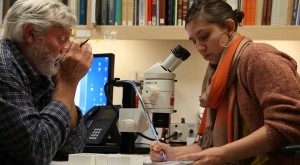
When Mollie Cueva-Dabkoski was dissecting a sheep’s heart during an eighth-grade science class, she had an epiphany that changed her life. “That heart told the story of anatomy and physiology!” she said.
Realizing that science is best communicated through stories, Cueva-Dabkoski, now just 19 years old, went on to explore beetles in China. She's now at Johns Hopkins University, and continues to do research during breaks.
Cueva-Dabkoski is considered an "Extreme Learner," a designation applied to just 12 individuals by the Institute for the Future, for her radical and gutsy approach to learning. Extreme Learners are self-directed, wide-ranging in their interests, comfortable with technology, and adept at building communities around their interests.
“Extreme learners aren’t so different from everybody else,” said Milton Chen, a fellow at the Institute for the Future and advocate for education reform. “We picked people who are extreme in their passion for learning." They are also willing to go their own way when traditional educational institutions interfere with their pursuits.
Thomas Hunt, for example, another designated "extreme learner," dropped out of high school when he was 14 to work on cancer research. Always interested in science, he found high school stultifying and needlessly time-consuming. Kids of varied interests were thrown together and taught in “the cookie-cutter method,” he said. After he left, Hunt found like-minded learners when he became one of 20 Thiel Fellows, formerly known as “20 Under 20,” which paid him $100,000 to drop out of school for two years and pursue his studies. “For some kids who have a vision of what they’re interested in, high school is not for them,” he said.
This was also true for Marc Roth, another extreme learner who dropped out of high school three times and never finished his community college education. (He earned his high school equivalency degree in three weeks.) Today, Roth is the founder of the Learning Shelter, a 90-day training program that teaches homeless people high-tech manufacturing skills. Roth is 40, and his improbable path to the Learning Shelter included delivering pizzas, programming and consulting in IT, sailing the seas on a cruise ship, and starting his own business. When that business collapsed, and Roth’s net worth fell from $21 million to nothing, he moved to San Francisco and lived in his car. When his car was broken into, Roth decamped to a homeless shelter for five months.


